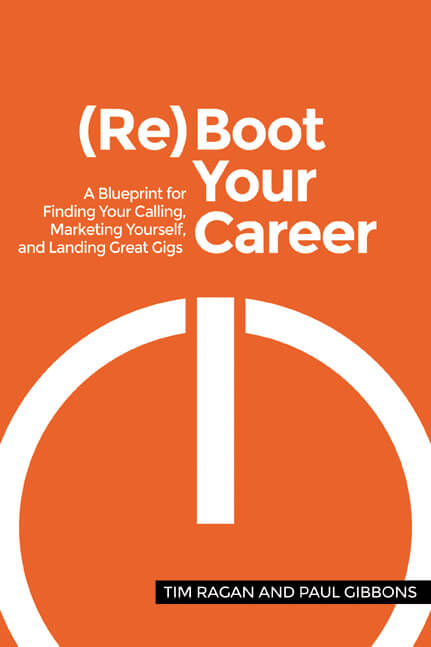
Each of us will work 100,000 hours in our lifetimes. Either those hours will be fulfilling – doing work that makes us come alive, or dreary – doing work that kills part of our spirit each time we “suit up.”
There are steps you have to take to become one of the “lucky ones.” (Excerpted fromReboot Your Career on Amazon.)
Step one – The “inside job”
Find out what makes you tick, what makes you come alive, and what you are good at. Ask yourself the hard questions, use all the psychometrics you can, start a journal on your good and bad days at work, create a career mission, and reflect upon your career values.
You will iterate this many times, as you grow and develop, but start today to think along those lines.
The “ikigai” (Japanese for “reason for being”) diagram sums it up beautifully.

Step 2 – Authentic personal branding
Learn how to talk about yourself in ways that excite people – so that they see you as a possibility. Once you’ve done the heavy lifting of the inside job, your communications about yourself will be aligned with “the authentic you.” That inside-outside alignment will make your resume, and your “elevator pitches” incredibly powerful.
Personal brand is what people say about you when you’ve left the room. (Jeff Bezos)
Step 3 – Network your butt off
Most people spend 80% of their efforts (when they are looking for a new role), in formal applications (online, job boards, formal applications). The balance (20%) is spent networking. The problem with this is that once a job is formally advertised, it is often gone. (To be more exact, there will be several people known to the hiring manager through their network who have the “inside track” and start big favorites to land the job. You might beat the odds, but usually not.)
Although formal job applications are part of life, you want (as much as possible) to be the candidate on the inside track. So how?
Reverse how you spend your time – and spend 80% of your job hunt networking (and only 20% on formal applications). If you have a job and are looking to change jobs, this could be 3-4 “events” a week (not just formal networking events, but “syncs”, “huddles”, “check-ins” with people you know). If you don’t have a job, you should be doing 20-30 of these a week.
Networking works in a non-linear and unpredictable way. Doing it energetically generates managed serendipity.
I’ve just launched ReBoot Your Career (co-authored with Tim Ragan). Our subtitle, A Blueprint for Finding Your Calling, Marketing Yourself, and Landing Great Gigsspeaks for itself. The three steps (outlined above) provide practical guidance, exercises, tools, psychometrics, and templates to help you make those 100,000 hours awesome!
I’m an author whose “beat” is helping business leaders use science and philosophy to make better strategic decisions, implement change, innovate, change culture, and create workplaces where talent flourishes. My most recent book, The Science of Organizational Change has been hailed as “the most important book on change in fifteen years.”